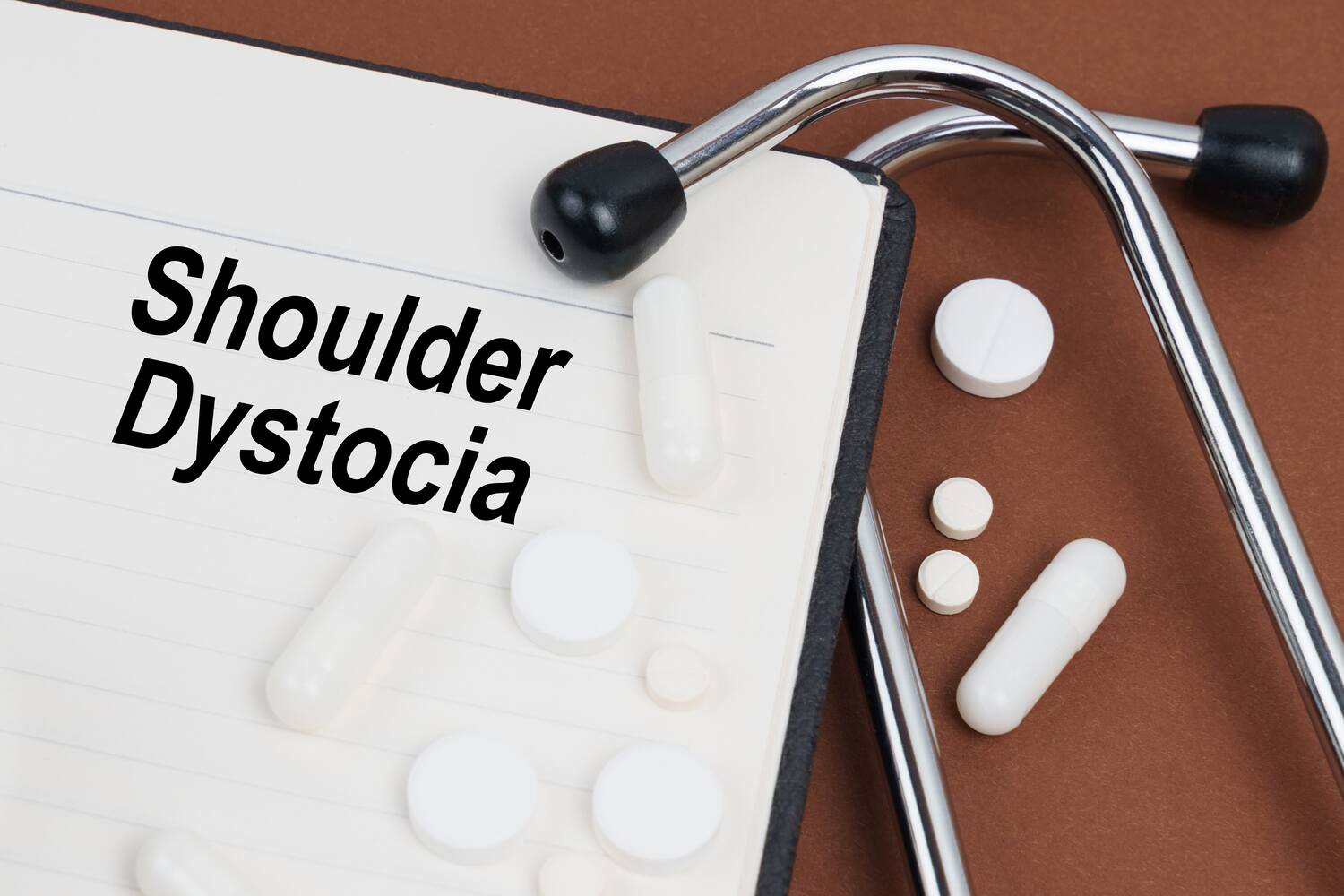
A dramatic and life-changing experience, giving birth is a delicate tango between expectation and the unknown. While most deliveries go without a hitch, some come with unforeseen problems. Shoulder dystocia during delivery is one such problem. When the baby’s head goes through the birth canal, and the shoulders become stuck behind the mother’s pelvic bone, a complex medical situation occurs. It not only impedes the ordinary course of birth, but it also needs prompt medical intervention to guarantee the health of the mother and child.
We will explore shoulder dystocia and the various factors contributing to its onset. To address this obstetric difficulty, we will examine its origins, prevalence, kinds, possible consequences, and the range of available therapeutic options. Healthcare professionals must have a thorough understanding of shoulder dystocia to empower pregnant parents. It provides information to help them make confident and well-informed decisions throughout the birth.
In This Article
- What Is Shoulder Dystocia?
- What Causes Shoulder Dystocia?
- How Common Is Shoulder Dystocia?
- What Are The Types Of Shoulder Dystocia?
- Are There Any Complications Of Shoulder Dystocia?
- Treatment Options For Shoulder Dystocia
- FAQ’s
What Is Shoulder Dystocia?
Shoulder dystocia is a medical word that is used to describe a situation when the shoulder of the baby gets stuck in the mother’s pelvis during delivery. It occurs when the baby’s head enters the birth canal, but the shoulders get lodged behind the pelvis of the mother. This impediment may hamper the delivery procedure. Emergency medical intervention is necessary to protect the mother and the infant.
What Causes Shoulder Dystocia?

Several reasons can bring on shoulder dystocia during delivery. The most frequent reason is a mismatch in the baby’s size and the mother’s pelvic opening. Shoulder dystocia is more likely in cases when the mother’s pelvic structure is limited, or the baby’s shoulders are too large to enter through the pelvic inlet. Additional elements that contribute are as follows:-
Maternal Diabetes
Shoulder dystocia is more common in women with diabetes, especially those who have gestational diabetes since they are more likely to give birth to babies that are bigger than typical.
Fetal Macrosomia
Macrosomia, the condition in which a baby is abnormally significant, can cause complications during birth, such as shoulder dystocia.
Prolonged Labor
If labor goes on for too long, the baby may descend too rapidly, which can cause problems like shoulder dystocia.
Maternal Obesity
Due to the possibility of more giant mothers giving birth to larger babies, obesity is linked to an increased risk of shoulder dystocia.
Previous Shoulder Dystocia
Shoulder dystocia increases the likelihood that it may reoccur in a woman’s subsequent pregnancies if it occurred during a prior birth.
How Common Is Shoulder Dystocia?
Shoulder dystocia during delivery occurs in 0.2% to 3% of vaginal births, making it a very uncommon problem. Although uncommon, the severe consequences and the need for immediate medical attention make it a significant worry for medical professionals. Because of its rarity, there is a greater need for medical personnel to be aware of this and ready to take quick action when presented with this obstetric difficulty.
What Are The Types Of Shoulder Dystocia?
Different forms of shoulder dystocia can be distinguished by the unique difficulties that arise during delivery. Among them are:-
1. Uncomplicated Shoulder Dystocia
In this kind, the mother’s pelvic bone briefly gets trapped between the baby’s shoulders due to resistance the infant experiences during birth. Despite this difficulty, successful movements made possible by expert medical assistance enable the baby to be delivered safely and on time. Remarkably, this type of shoulder dystocia usually goes away without posing a long-term risk to the mother or child.
2. Complicated Shoulder Dystocia
On the other hand, complex shoulder dystocia poses a more challenging situation. The hazards associated with this increase if problems beyond the original blockage develop. It may involve fractures or harm to the baby’s vulnerable nerves, which would complicate the delivery procedure. Handling complex shoulder dystocia requires advanced training and a team approach to reduce the risk of complications for mother and child.
Are There Any Complications Of Shoulder Dystocia?

Shoulder dystocia during delivery can result in several short- and long-term issues for both the mother and the child.
Maternal Injuries
Maternal injuries resulting from the intense efforts needed to treat shoulder dystocia might include rips in the perineum and harm to the uterus. These wounds highlight the difficulty of the movements required to properly negotiate this obstetric issue, even though they are frequently reversible.
Brachial Plexus Injury
Of all the sequelae, brachial plexus damage is among the most prevalent in neonates. Damage to the nerves that govern the arm in this disorder results in varied degrees of weakening or paralysis. For the infant’s long-term health, brachial plexus injuries must be identified and treated quickly.
Fractures
Unfortunately, the complex movements that remove the baby’s shoulders may break bones. Fractures of the humerus and clavicles are prevalent, highlighting the physical toll that shoulder dystocia resolution may have on the developing baby’s delicate skeleton.
Hypoxia
Shoulder dystocia frequently makes delivery take longer than expected, which might endanger the baby’s oxygen supply. Hypoxia may result from this, which can have serious health effects on the baby. Careful observation and timely intervention are essential to reduce the dangers of oxygen deprivation during labor.
Treatment Options For Shoulder Dystocia
When shoulder dystocia during delivery is diagnosed, prompt and quick intervention is essential. To deliver babies safely and reduce the chance of difficulties, medical professionals use a variety of techniques.
McRoberts Maneuver
The McRoberts Maneuver, which entails bending the mother’s legs sharply toward her abdomen, is one of the main procedures used. By widening the pelvic outlet, this technique aims to lessen the problems linked to shoulder dystocia and make it easier for the infant to pass through the delivery canal.
Suprapubic Pressure
Applying suprapubic pressure is another helpful method. Healthcare professionals can help dislodge the baby’s shoulders and facilitate a safer and more efficient birth by carefully applying pressure to the mother’s abdomen right above the pubic bone.
Episiotomy
Healthcare professionals may choose to perform an episiotomy, a minor surgical operation that involves making a tiny incision in the perineum, under several situations. The purpose of this incision is to provide more room, which will enable safe delivery of the baby in the event of shoulder dystocia and lower the possibility of difficulties for the mother and the child.
Internal Rotation
Another technique used is gentle internal rotation to help move the baby’s shoulders out from behind the mother’s pelvic bone. With this method, the shoulder dystocia issue can be resolved more effectively and under control by carefully twisting the baby’s shoulders inside out.
Zavanelli Maneuver
In severe situations where alternative techniques are unproductive, medical professionals could utilize the Zavanelli Maneuver. Pushing the baby’s head back into the delivery canal is part of this emergency intervention, which immediately follows an emergency cesarean section. The Zavanelli Maneuver, although regarded as a last option, is essential when the mother’s and the infant’s welfare is in urgent danger.
Shoulder dystocia during delivery is a complex and perhaps fatal condition. Healthcare practitioners must be well informed and ready for this uncommon situation because of the potential for severe outcomes. To manage shoulder dystocia and lessen the consequences that come with it, early detection and prompt intervention are essential. The results for moms and newborns in this challenging scenario constantly improve because of medical understanding and technological advances.
FAQ’s
1.Is It Possible To Foresee Shoulder Dystocia Before Labor Starts?
Regretfully, it’s challenging to diagnose shoulder dystocia before labor starts. To detect higher-risk circumstances, healthcare practitioners might evaluate specific risk factors, such as maternal diabetes or fetal macrosomia.
2. After Shoulder Dystocia, Would The Infant Have Any Long-Term Effects?
While many newborns with shoulder dystocia heal without any long-term problems, there is a chance that some may, especially if there are fractures or injuries to the nerves. It is crucial to schedule routine check-ups with medical professionals to track the baby’s progress and quickly handle any possible issues.

